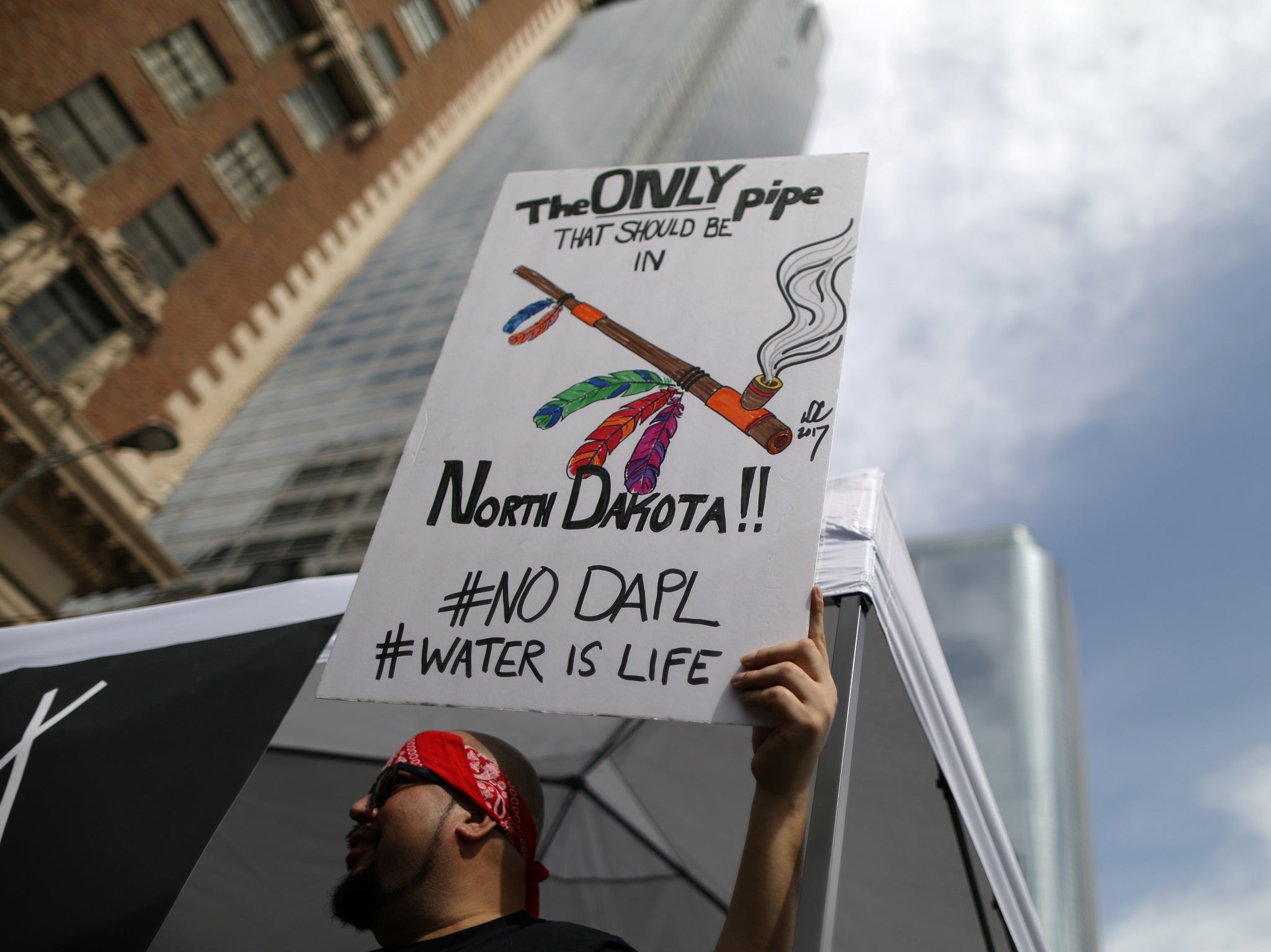Dakota Access pipeline leaks 84 gallons of crude oil before becoming fully operational
Standing Rock Sioux tribe says leak proves pipeline is a threat to its water and cultural sites

The Dakota Access pipeline leaked 84 gallons of oil in South Dakota early last month, which an American Indian tribe says bolsters its argument that the pipeline jeopardises its water supply and deserves further environmental review.
The April 4 spill was relatively small and was quickly cleaned up, and it didn’t threaten any waterways. The state’s Department of Environment and Natural Resources posted a report in its website’s searchable database, but it didn’t take any other steps to announce it to the public, despite an ongoing lawsuit by four Sioux tribes seeking to shut down the pipeline.
Brian Walsh, an environmental scientist with the agency, said Wednesday that the state doesn’t issue news releases on spills unless there is a threat to public health, a fishery or a drinking water system. He said there was no such threat with the Dakota Access leak, which happened nearly 100 miles east of the Missouri River’s Lake Oahe reservoir, which is the tribes’ water supply.
“We realize Dakota Access gets a lot of attention. We also try to treat all of our spills in a consistent manner,” Walsh said. “We treated this as we would treat any other 84-gallon oil spill.”
The leak occurred at a rural pump station in the northeast of the state as crews worked to get the four-state pipeline fully operational, Walsh said. The oil was contained on site by a plastic liner and containment walls and quickly cleaned up. Some oil-contaminated gravel will be disposed of at an area landfill, he said.
Such incidents have happened with other pipelines in South Dakota, and the Dakota Access leak didn’t come as a surprise, according to Walsh. The state is happy with the response of Texas-based pipeline developer Energy Transfer Partners and won’t issue a fine, he said.
“Size-wise, an 84-gallon release is pretty small relative to a lot of other things we work on,” Walsh said. “I would characterise it as a small operational spill that was cleaned up right away.”
The Standing Rock Sioux tribe, which was the initial plaintiff in the lawsuit, said the leak proves that the pipeline is a threat to its water and cultural sites.
“These spills are going to be nonstop,” tribal Chairman Dave Archambault said. “With 1,200 miles of pipeline, spills are going to happen. Nobody listened to us. Nobody wants to listen, because they’re driven by money and greed.”
Tribal attorney Jan Hasselman said the leak shows the need for more environmental study of the pipeline, which will move oil from North Dakota through South Dakota and Iowa to a distribution point in Illinois. The U.S. Army Corps of Engineers had planned additional study but scrapped the idea after President Donald Trump earlier this year pushed for completion of the pipeline that had been stalled by months of protests and lawsuits.
Energy Transfer Partners maintains that the pipeline is safe. Spokeswoman Vicki Granado issued a statement saying the spilled oil “stayed in the containment area as designed.”
No other spills have been reported along the pipeline in South Dakota, according to Walsh. A federal spill report database does not show any reports from Energy Transfer Partners or its subsidiary Dakota Access LLC in any of the other states through which the pipeline passes.
Granado didn’t comment on whether there have been any other problems as crews get the pipeline ready to be fully operational by June 1.
The Indigenous Environmental Network, which helped organise large-scale protests against the pipeline in North Dakota last year and earlier this year, issued a statement saying “the fact that this occurred before Dakota Access even becomes operational is all the more concerning.”
AP
Join our commenting forum
Join thought-provoking conversations, follow other Independent readers and see their replies
Comments